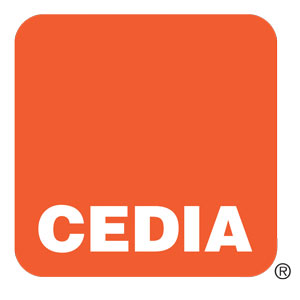
|
|
Contributed by the Custom Electronic Design & Installation Association. To learn more about CEDIA membership visit www.cedia.org/join. |
I’m fairly confident that anyone reading this column already knows what an HDMI cable is and what it’s designed to do. However, just like a truck morphing into a giant super-cool robot, there are multitudes of complexities to the HDMI system lurking beneath that seemingly simple PVC-jacketed exterior.
When the High Definition Multimedia Interface was under development, one of the key design aspects was its two-way communication capability between the source and display. Unlike analog video transmission systems (i.e., component video), the signal path no longer consists of video and audio information simply flowing downstream from a source device to a display, enabling your client to enjoy the latest Michael Bay blockbuster. Now the source and display need to have a conversation, agree on the terms of how they will speak to each other, and approve of what the other one has to say. Then — and only then — will your client be able to experience Hollywood’s latest piece of eye candy in all its high-definition glory using HDMI.
For anyone who is not already installing systems that include HDMI or those who’ve been burned on projects involving digital video, this may seem a bit daunting and lead some to cling to analog as a simple, failsafe solution. If you’re avoiding HDMI, I recommend you reconsider and do it quickly, because you’re going to be forced to adapt very soon. For those who have not kept score, the Analog Sunset began in 2010 and is now rapidly limiting options for analog video signal distribution. According to the Advanced Access Content System (AACS), which is part of the Blu-ray license agreement signed by all manufacturers, Blu-ray players manufactured after 2010 are required to limit the resolution of any video output over analog cabling (composite, s-video, or component) to a maximum of 480i. The AACS also states that by 2013, manufacturers may no longer include analog outputs of any kind on their Blu-ray players.
Despite the analog sunset pertaining specifically to Blu-ray, it’s important to keep in mind that all manufacturers are progressing towards the removal of analog video connections. Do not be surprised when a receiver upgrade requires a complete system overhaul of your existing customer’s component video infrastructure.
Instead of focusing on the fact that we soon will not have a choice in the matter, let’s celebrate the advantages HDMI can provide. HDMI offers advanced features and functionality not available in the analog world. First, HDMI offers the best available video quality in our market — period. It’s also currently the only transmission medium capable of delivering new high-tech formats such as 3D, 4K, Deep Color and multi-channel uncompressed audio — and it all runs over a single cable.
Hopefully, I’ve convinced you why the industry must make the transition to HDMI, so let’s talk a bit more about how to do this successfully. In order to design, implement, and troubleshoot HDMI systems effectively, there are a few key items that must be understood about how these systems operate. Two-way communication must happen in order for your client to actually get picture and sound from HDMI-connected devices.
The aforementioned conversation that has to occur between devices is actually called the HDMI initialization sequence (commonly called “handshake”) and the first step in this sequence is known as “Hot Plug.” Hot Plug is a +5v signal sent between the source and display, acknowledging that they are connected to each other. This is the wakeup call telling both devices to begin sharing information. If the +5v Hot Plug pulse does not occur, or attenuates to the point of being below the threshold voltage, then you basically get nothing. Game over — go directly to troubleshooting; do not pass go, do not collect picture or audio.
The second step in the initialization sequence is known as the Extended Display Identification Data (EDID) standard. It was originally developed by the Video Electronics Standards Association (VESA) to support plug-and-play functionality within the computer community. The idea is that by having a display share its formatting/processing capabilities with the source, a consumer would always experience the highest-quality video and audio within the system’s capabilities. While fantastic in theory, manufacturers have struggled somewhat with implementing EDID correctly across all products since its adoption within the consumer electronics space. Because a display’s EDID is responsible for instructing the source on how to format and send the A/V information, incorrect communication may cause all sorts of seemingly odd anomalies — stereo instead of multi-channel audio, wrong aspect ratios, incorrect colorimetry, lower-than-optimal resolutions, or even no video/audio at all. It is important to note that the complexities of EDID processing increase exponentially when using HDMI splitters or matrix switches connected to multiple displays with differing EDIDs.
The final step in the “handshake” process is copyright authentication, also known as High-Bandwidth Digital Content Protection (HDCP). I have often heard it affectionately referred to within the industry as “Hollywood’s Defense against Chinese Piracy.” HDCP was developed by Intel as a copy-protection scheme requiring key exchanges between authorized devices before allowing content to be viewed. While this may seem perfectly reasonable and easy to execute on the surface, there are multiple factors that contribute to authentication failures within a significant number of HDMI systems.
First, even though HDMI v1.0 was officially launched in 2003, no HDCP compliance testing specifications existed until 2006. Second, the HDMI specification allows for up to 127 different “key” values per device; yet, many manufacturers assume their source device will be connected to only one display, and therefore implement a measly one to three keys. This can be a major problem if you are sending the signal from that source to multiple destinations. Unless the splitter/matrix switch you’re using has the ability to monitor and enforce HDCP compliance internally, when more displays are connected than there are keys for the source to hand out, you will typically end up with either the “flashing screen of death” or a beautiful image of the environment described by Edgar Allen Poe in the “Pit and the Pendulum.” Lastly, it is possible for manufacturers to issue firmware updates affecting the way HDCP is handled by their devices and these updates can break a system of devices that were previously working together quite well.
While this exercise of peeling back the jacket to expose the internal workings of HDMI may not have been quite as exciting as watching an everyday object transform itself into a walking, talking, superhero robot, hopefully it has given you some ideas about how to be successful when dealing with the complexities of today’s most popular digital video transmission medium. Armed with this knowledge (which is almost as cool as being armed with a plasma cannon, right?), it is now your job to go out and provide your clients with systems of the highest quality and reliability.
To learn more, check out the CEDIA Marketplace (www.cedia.net/marketplace) online or use the CEDIA app on your smartphone to find our white paper series on HDMI. Be sure to keep an eye on the CEDIA calendar of events for in-person and hands-on training sessions, including the Home Theater Boot Camp and HDMI Workshop.





